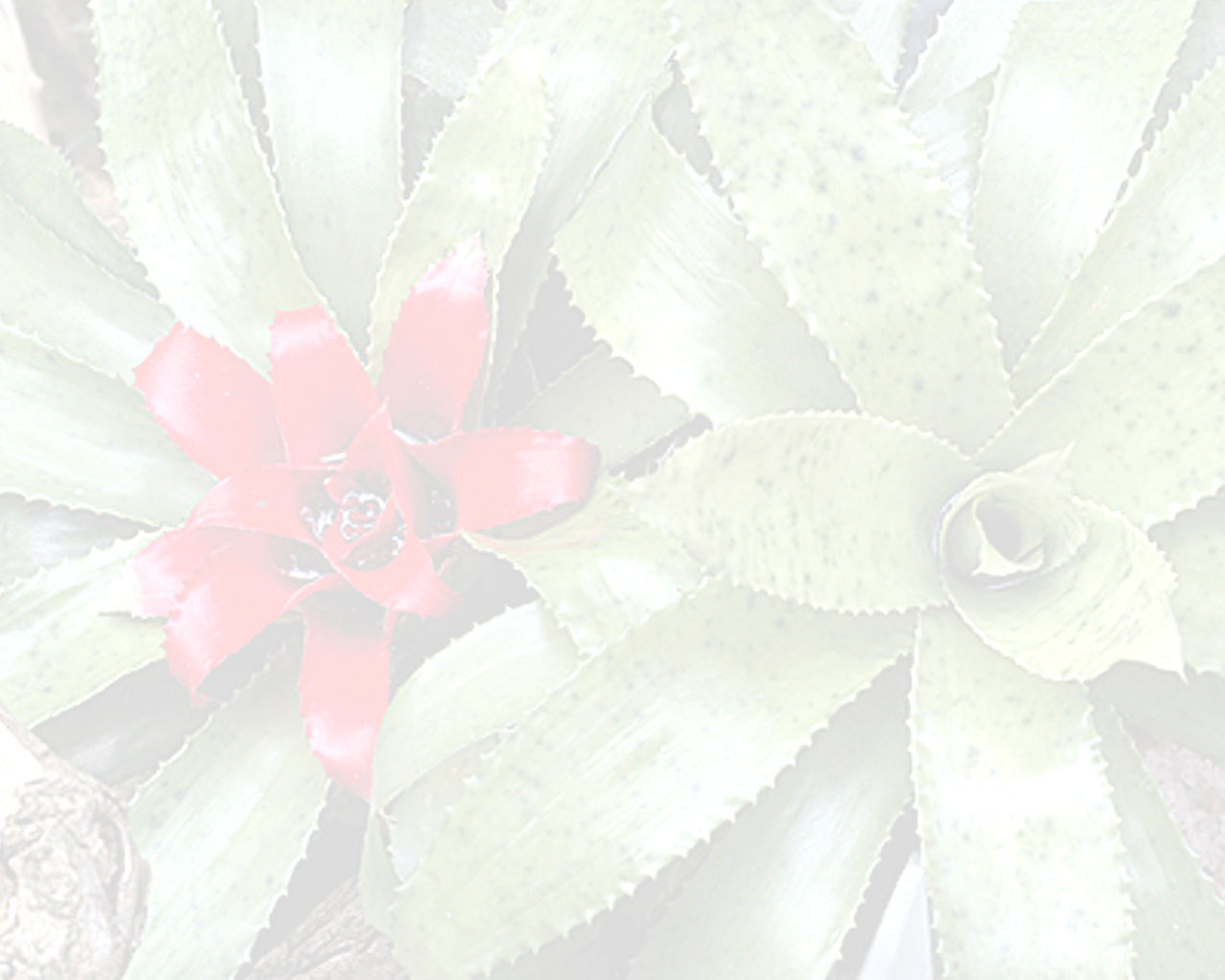Nidularium antoineanum Wawra
Literature references:
*move your mouse pointer over the page numbers to see comment
Comments:
- by Derek Butcher
In the March /April issue mention was made that the plant we are growing as Nidularium antoineanum is really Nidularium procerum. I would like to speak in defence of Nidularium antoineanum.
This problem started for me about 5 years ago when I heard on the grape-vine that this plant was wrongly named. As is my wont I took the inflorescence of mine to pieces making sure there was an offset !!! Removing the inflorescence and scape can be quite traumatic to the mother plant especially a Nidularium! I compared my findings with the description in Smith & Downs and could not understand what the fuss was all about. I then read about the same accusation in the New Zealand Journal and this time I wrote to the Kiwis asking who had made this decision and why was it not N. antoineanum. No reply! The matter was shelved but not forgotten.
Luckily, I had an inflorescence left on my N. antoineanum. It had finished flowering but most of the flowering bits were left. Now I had Leme's book (2000) to refer to and his descriptions are much more detailed than in Smith & Downs. First I had to check my current findings with what I had written 5 years ago and these tallied. I was now able to bring other factors in too such as did the flowers have pedicels?
Armed with this information I tried Leme's key and just could not get to N. procerum. I kept getting to N. antoineanum. The crucial step was 'Leaf blades often subentire to subdensely spinulose, spines usually more than 5mm apart, floral bracts entire or remotely spinulose, ovary white' compared with 'Leaf blades often densely spinulose, spines usually 2-4mm apart, floral bracts densely and distinctly spinulose towards the apex, ovary lilac-blue or lilac towards the base'
Our leaf blades had spines mostly 5mm apart, the floral bracts had at the tip a few ,what Margaret and I call 'jelly spines'- under the microscope they are more like little appendages than spines and not like leaf spines at all, and the ovary was white. This leads to N. antoineanum
In comparing the plant with the actual description most criteria matched but with the sepals being longer than expected.
So until I hear who did the identification and whether they took the inflorescence to pieces like I did I'll still use the name N. antoineanum or even aff. antoineanum .
I would also like to know where I could have gone wrong in my interpretation of what I saw because we are never too old to learn.
Eventually this clone was called 'Litmus' see BCR
- Distribution & Habitat
Nidularium autoineanum occurs mainly in Rio de Janeiro with outlying groups in Sao Paulo (near the Rio de Janeiro border) and Minas Gerais. It is terrestrial or epiphytic in the lower layer of the Atlantic slope forest, at altitudes of 800 to 1 ,800 m. At higher elevations, especially on mountain tops and in cloud forests, it forms dense populations that cover the forest floor or the rocky outcrops at the edge of the forest.
This species is very well preserved both iu situ and ex situ. In Rio de Janeiro, it is protected in Serra dos Orgaos National Park and also in Bocaina National Park on the border with Sao Paulo state. In Minas Gerais, it grows in Caparao National Park and Serra do Brigadeiro State Park. There are several clones of N. autoineanum in cultivation.
mainly in Rio de Janeiro with outlying groups in Sao Paulo (near the Rio de Janeiro border) and Minas Gerais. —See Leme 2000a

